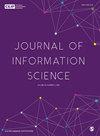TsEDM:一个用于中文事件检测的两步事件检测模型
IF 1.7
4区 管理学
Q3 COMPUTER SCIENCE, INFORMATION SYSTEMS
引用次数: 0
摘要
事件检测(ED)由两个阶段组成——触发识别(TI)和触发分类(TC)。传统的ED采用统一的模型来同时处理上述两个阶段的任务。我们认为,在ED的上下文语义要求和这两个阶段的目标方面存在一定的差异。其中,在没有自然单词分隔符的语言(如汉语)中,TI仍然存在单词触发不匹配问题。TC面临着触发歧义和句子中多个触发因素的挑战性问题。在本文中,我们提出了一个全新的两步事件检测模型(TsEDM),试图缓解上述问题。具体而言,开发了一种新的“头尾双指针”(HT-DP)标记策略,以获得更多的候选触发器,从而克服第一步(TI)中的连续标记、嵌套标记和独立标记问题。此外,在第二步(TC)中构建了一个“实体-主题-候选-触发器”交互图(E2T-IG),以考虑候选触发器与所有事件语句之间或所有事件语句中核心信息之间的交互关系,从而增强了每个候选触发器的表示。最后但并非最不重要的是,提出了一种基于抖动门控和残差的萎缩卷积神经网络(SGR-ACNN)作为这两个步骤的通用框架,该网络动态集成各种表示作为模型输入。在ACE2005-CN上的实验表明,TsEDM显著优于最先进的(SOTA)方法。本文章由计算机程序翻译,如有差异,请以英文原文为准。
TsEDM: A two-steps event detection model for Chinese event detection
Event detection (ED) consists of two phases – trigger identification (TI) and trigger classification (TC). Traditional ED adopts a unified model to process the above two-stage tasks at once. We argue that there are certain differences in the contextual semantics required and the goals of these two phases in ED. In which, TI remains suffers from the word-trigger mismatch problems in languages without natural word delimiters such as Chinese. And the TC is facing challenging problems of trigger ambiguity and multiple triggers in a sentence. In this article, we propose a brand-new two-steps event detection model (TsEDM), which attempts to alleviate above-mentioned problems. Specifically, a novel ‘head-tail dual-pointer’ (HT-DP) labelling strategy is developed to obtain more candidate triggers to overcome the problems of continuous labelling, nested labelling and independent labelling in the first step (TI). Besides, an ‘entity–topic–candidate–trigger’ interaction graph (E2T-IG) is constructed in the second step (TC) to consider the interaction relationship between candidate triggers and core information inter or in all event sentences, which enhance the representation of each candidate trigger. Last but not least, a shake-gated and residual-based atrous convolution neural network (SGR-ACNN) is proposed as the common framework of these two steps, which dynamically integrates various representations as model inputs. Experiments on the ACE2005-CN show that TsEDM significantly outperforms state-of-the-art (SOTA) methods.
求助全文
通过发布文献求助,成功后即可免费获取论文全文。
去求助
来源期刊

Journal of Information Science
工程技术-计算机:信息系统
CiteScore
6.80
自引率
8.30%
发文量
121
审稿时长
4 months
期刊介绍:
The Journal of Information Science is a peer-reviewed international journal of high repute covering topics of interest to all those researching and working in the sciences of information and knowledge management. The Editors welcome material on any aspect of information science theory, policy, application or practice that will advance thinking in the field.
 求助内容:
求助内容: 应助结果提醒方式:
应助结果提醒方式:


